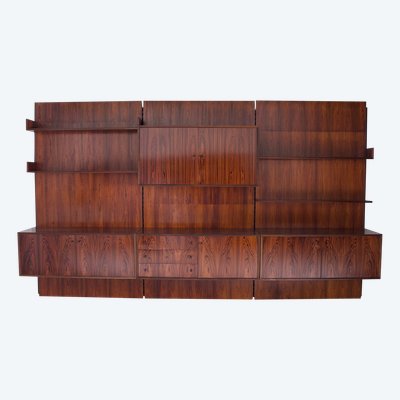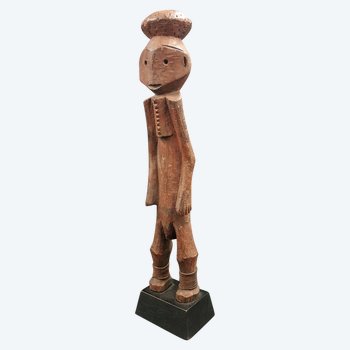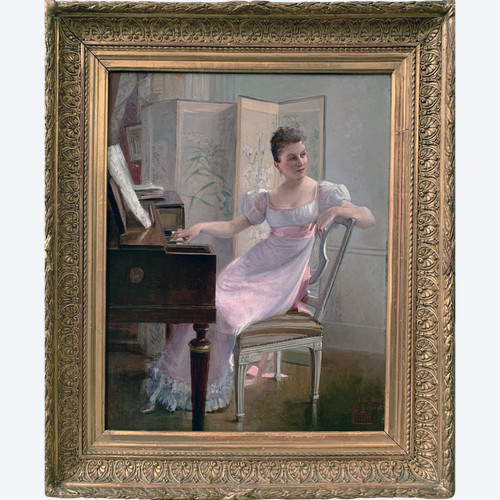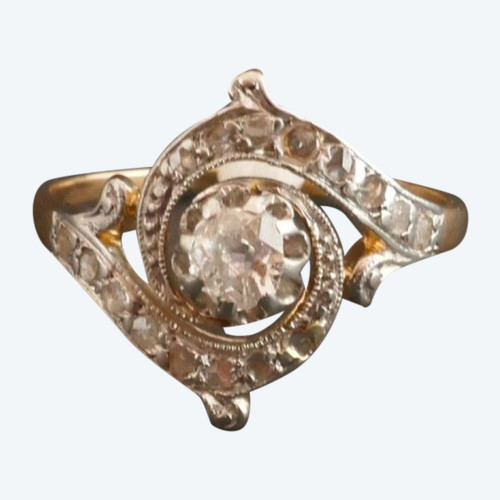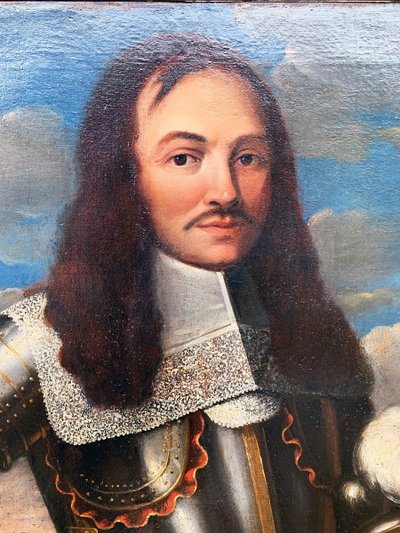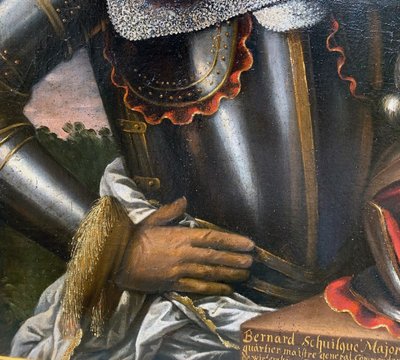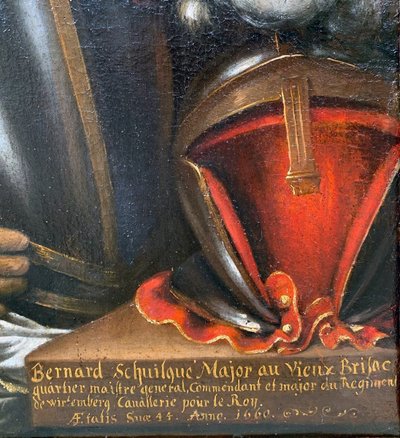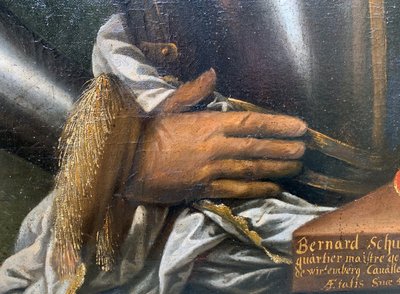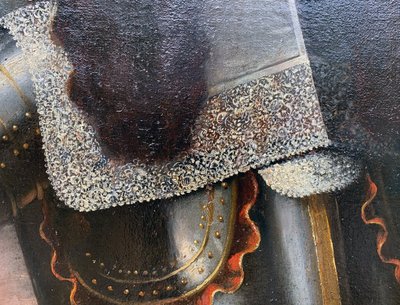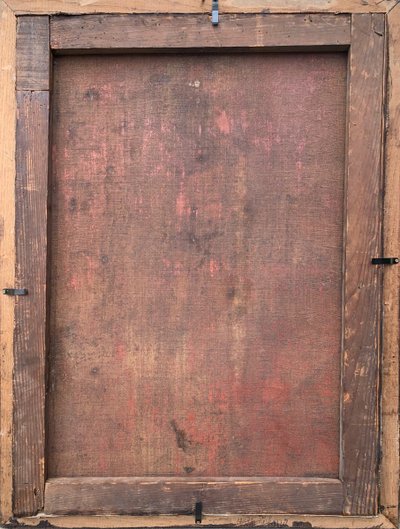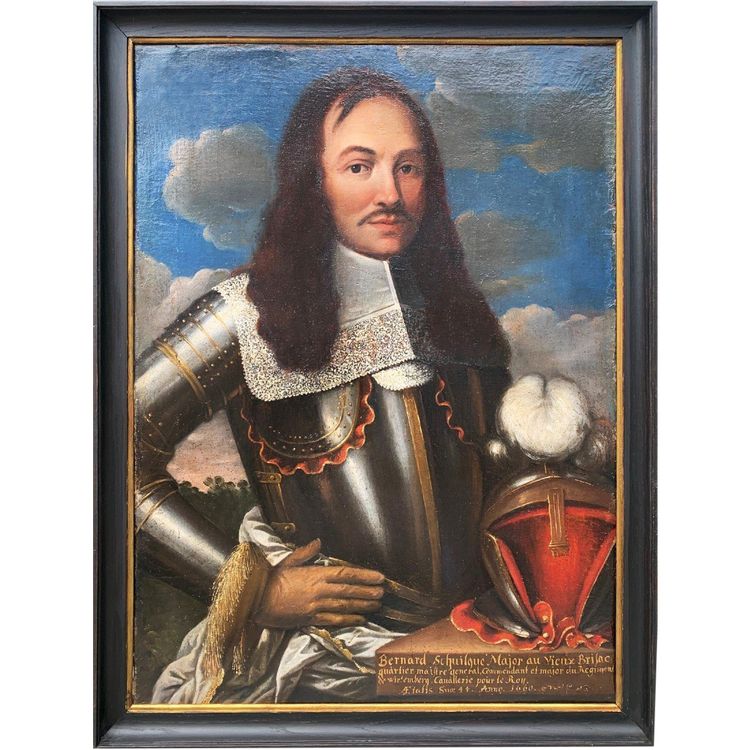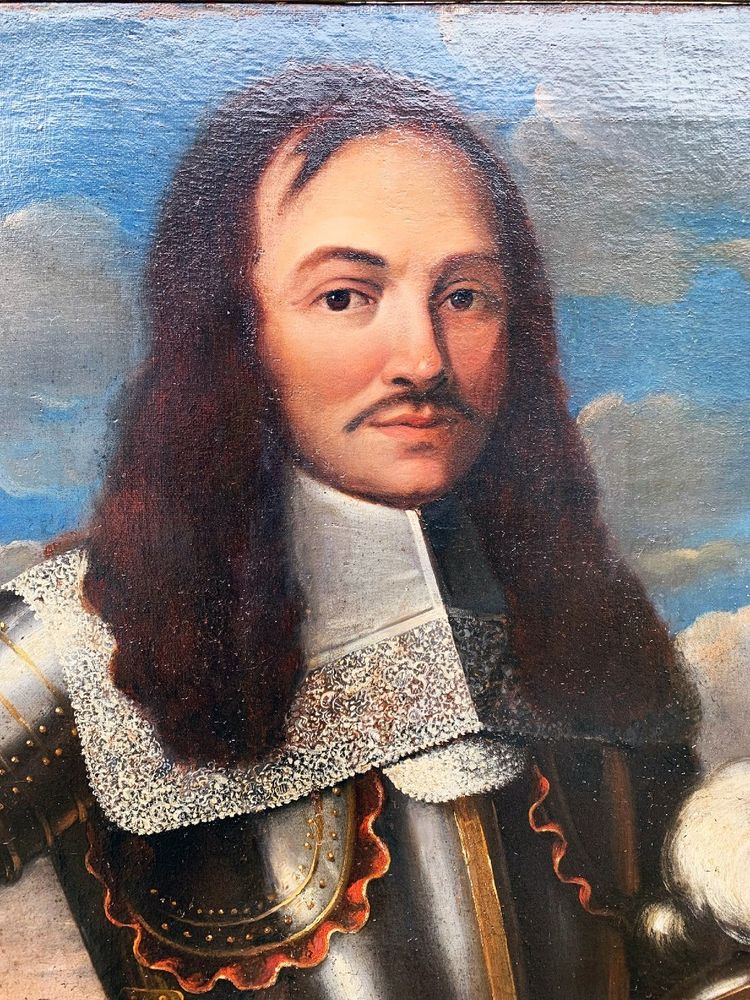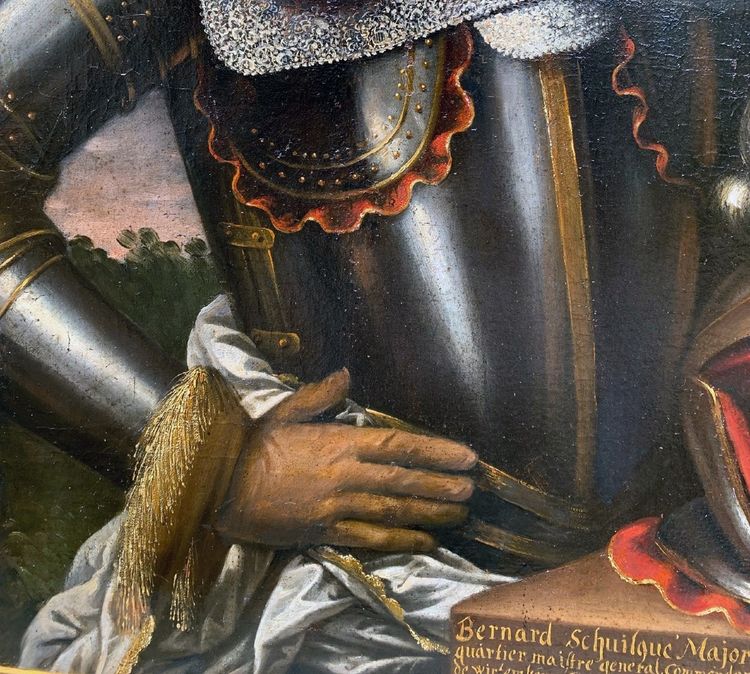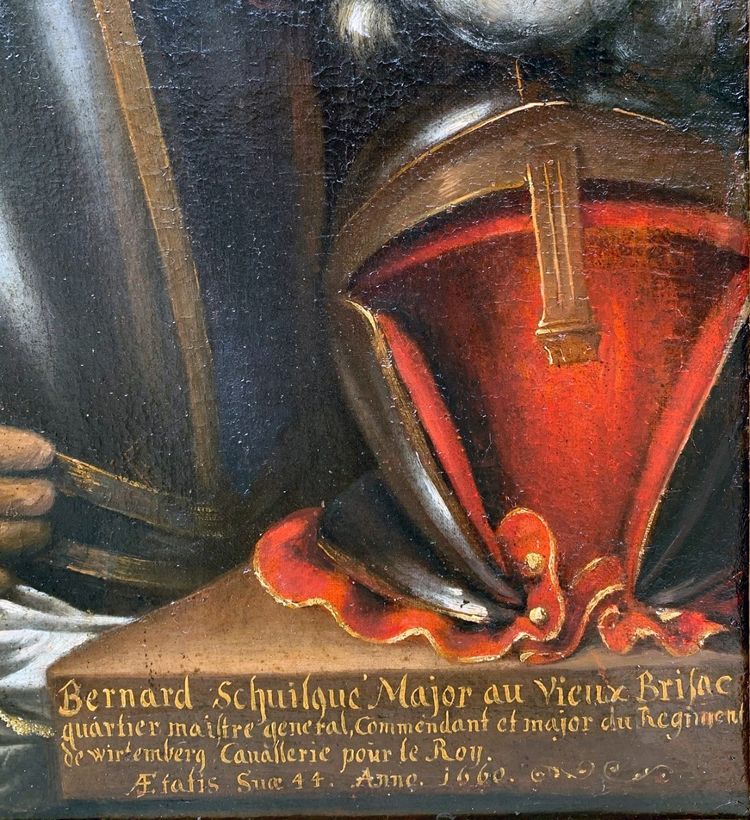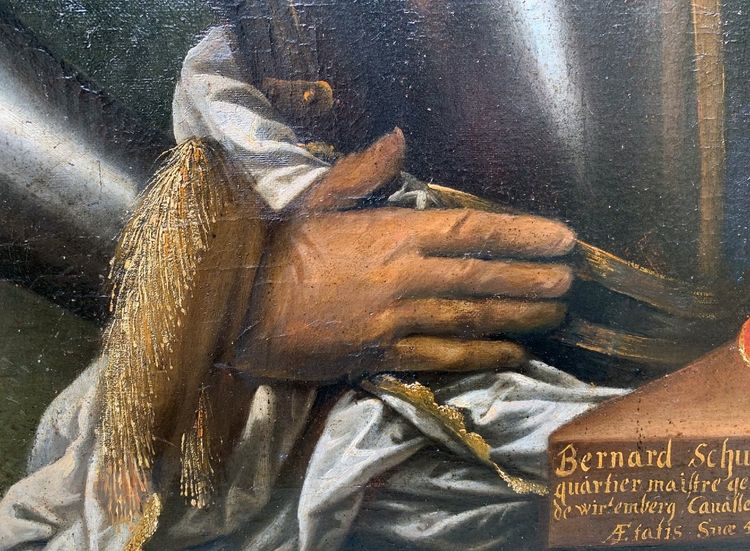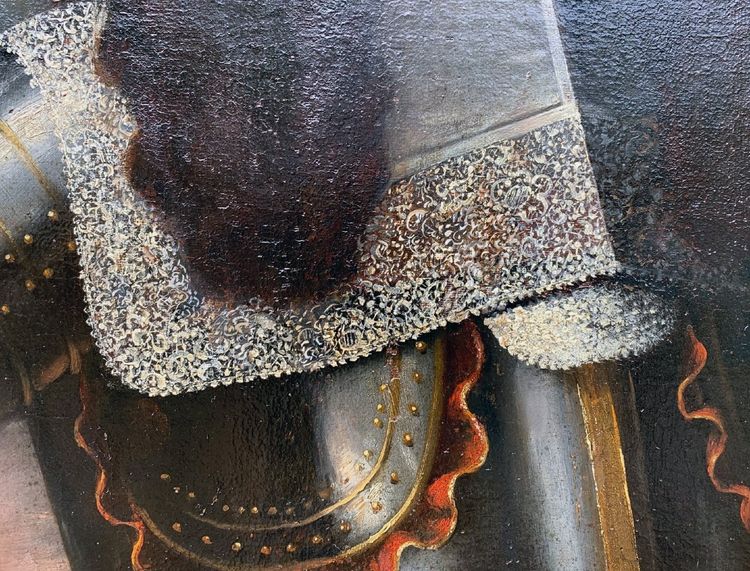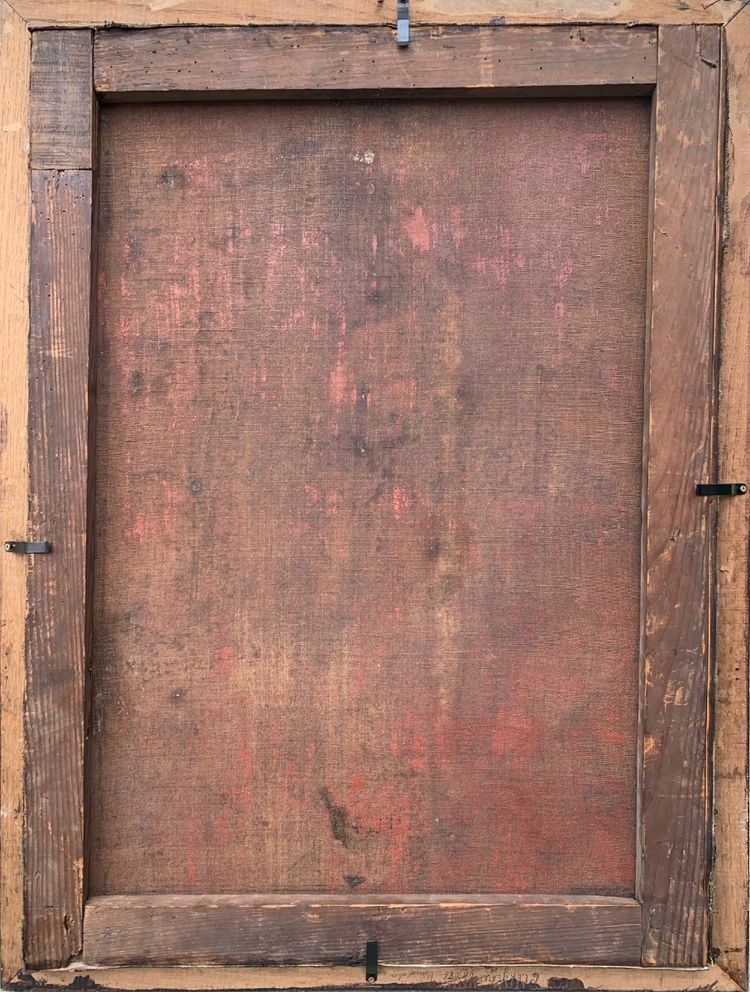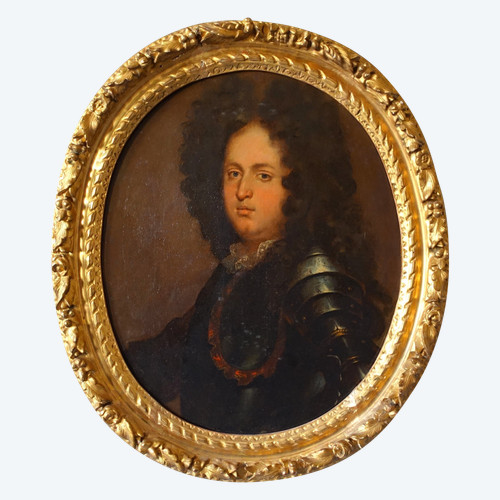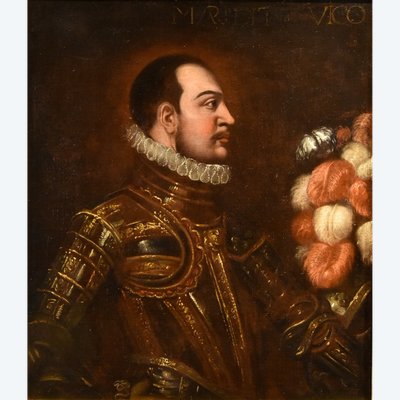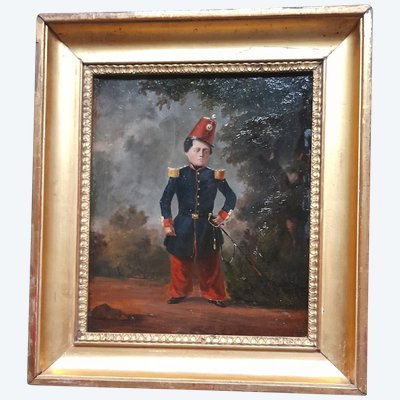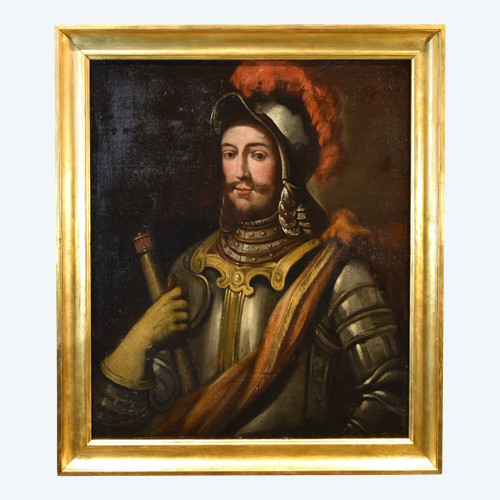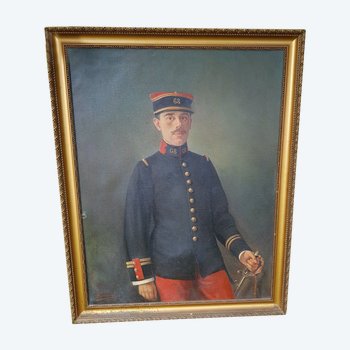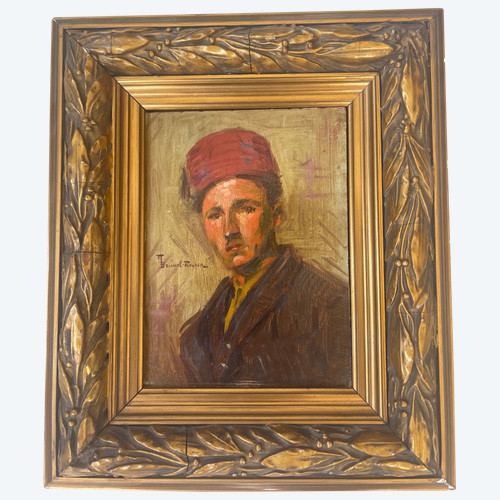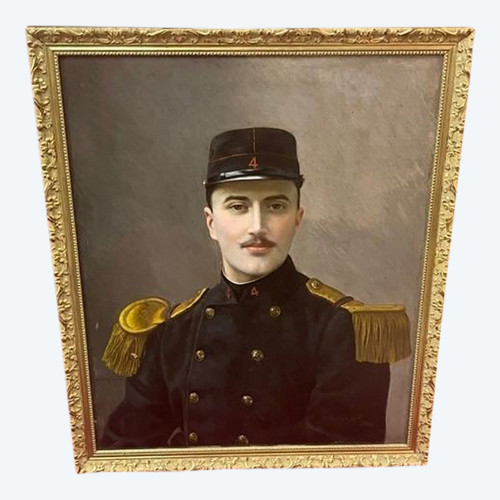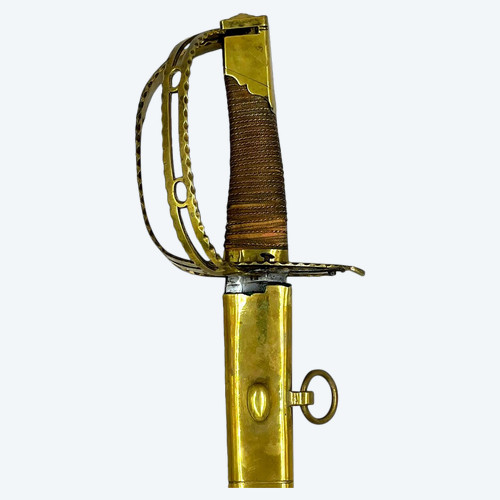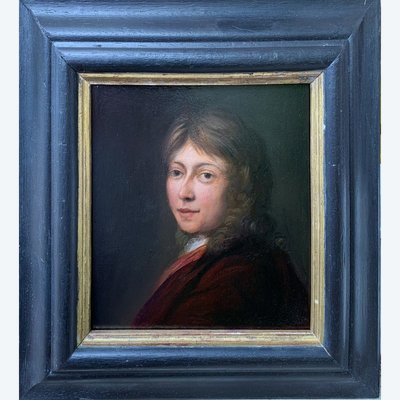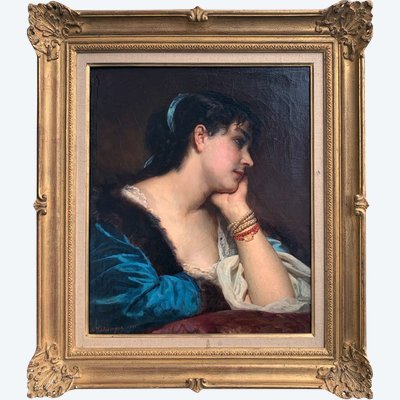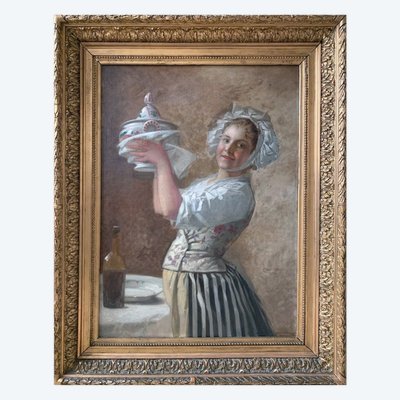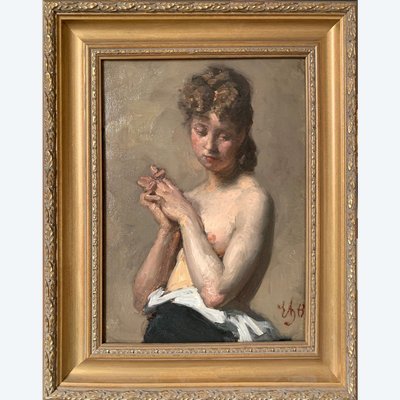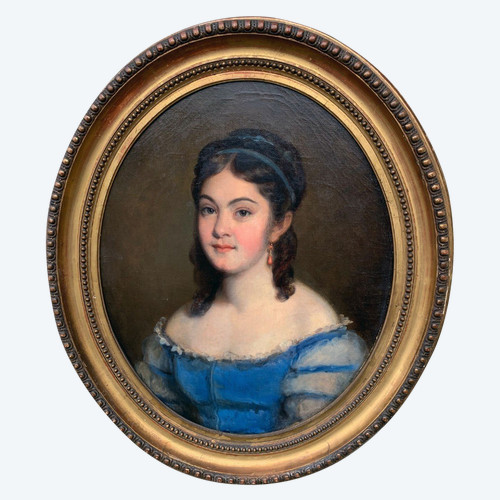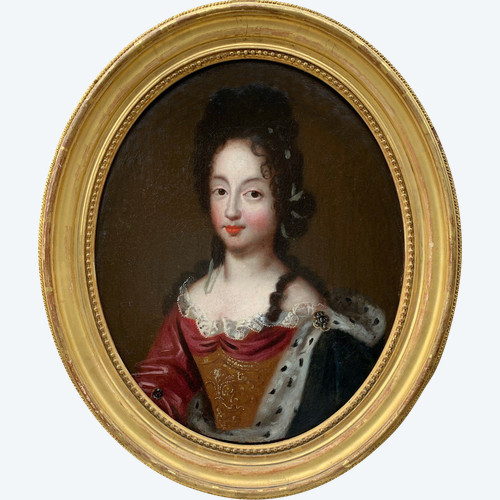This description has been translated and may not be completely accurate. Click here to see the original
Oil on canvas
Size with frame 92/69 cm
Size without frame 62/85 cm
It is quite possible that this portrait was painted by an itinerant painter, specializing in military ceremonial portraits, as there were many such artists in the 17th century, often trained in Flanders or the United Provinces, and working on commission for garrison officers.
The painting could be attributed to a Germanic or Flemish painter active in the Rhineland area around 1660, belonging to the Holy Roman school, with Flemish influences.
Imposing and rare portrait of a senior officer in armor, identified by a period inscription as Bernard Schuilque, major at Vieux Brisach, quartermaster general, commander and major of the Württemberg cavalry regiment in the service of the king.
This striking painting embodies all the solemnity and military pride of the 17th century. The man, dressed in superb armor with gorgets and gilded facings, poses before a sky animated by clouds, holding the pommel of his sword in one gloved hand, with a helmet trimmed with white feathers at his side. With its dignified expression and assertive gaze, this work celebrates the prestige of a man of war in the service of the great powers of his time.
This portrait, dated 1660, shows Bernard Schuilque, identified as quartermaster general, commander and major of the Württemberg cavalry regiment in the service of the king, stationed at Vieux-Brisach on the right bank of the Rhine.
This was at the end of the decade following the Thirty Years' War (1618-1648), a major European conflict that determined the political and territorial balance of the continent. France, having emerged stronger from this conflict, had increased its influence in the border regions of the Holy Roman Empire, particularly along the Rhine, in Alsace and as far as Vieux-Brisach, which it had controlled militarily since 1638.
In this context, the royal armies integrated numerous foreign officers, notably Flemish, Walloon, Swiss, German and Dutch, often recruited from foreign regiments in the service of the King. Bernard Schuilque, whose name sounds Dutch or Flemish, seems to belong to this transnational military elite, in the service of the French monarchy. Here, he commands a Württemberg cavalry regiment, probably a German unit raised by alliance or contract, common in 17th-century armies.
Vieux-Brisach (Alt-Breisach), a strategic stronghold on the Rhine, was an essential military lock in the French policy of defense and penetration of Germanic territories. The officers assigned there - like Schuilque - held key positions in both administration and military defense.
The portrait thus reflects both the individual prestige of this officer, his integration into the French military apparatus, and the fluid geopolitics of the post-Thirty Years' War era, where loyalties, services and identities are often played out across national borders.
Ref: YHT24QSPCT
 Modular wall shelf in rosewood.
4.800 € EUR
Modular wall shelf in rosewood.
4.800 € EUR
 Art Nouveau Diamond Ring.
1.220 € EUR
Art Nouveau Diamond Ring.
1.220 € EUR

